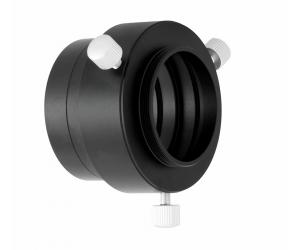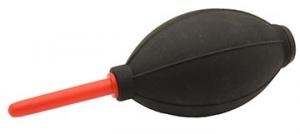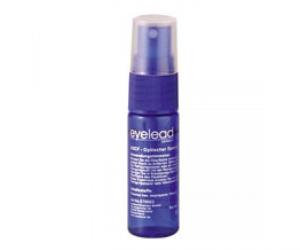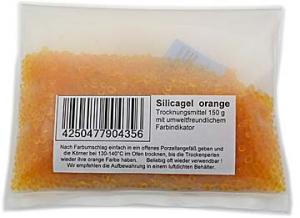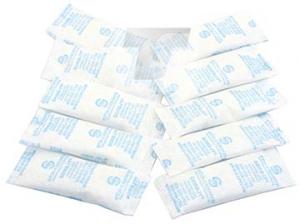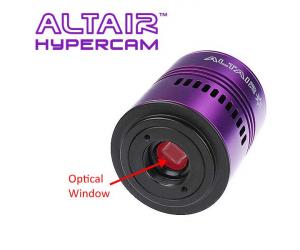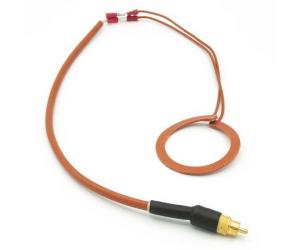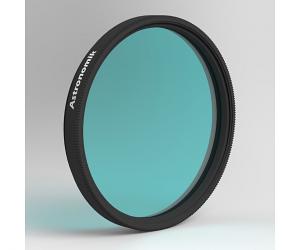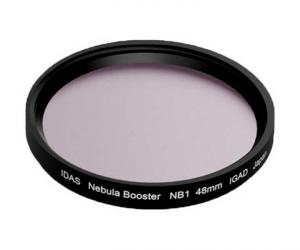- Telescopes
- Overview:
Telescopes - Achromatic Refractor
- Apochromatic Refractor
- Overview:
Apochromatic Refractor - ED Refractor - less color aberration than an achromatic
- SD APO - color free 2-element APO objective
- EDT APO - 3 element ED objective
- High End APO with 3-element APO objective - no color aberation
- Flatfield APO with flat field for Astrophotography
- All Apos and EDs from all manufacturers - large overview
- TS APO and ED from Japan with high quality optics
- Overview:
- Newtonian Telescopes
- Dobsonian Telescopes
- RC Ritchey Chretien Telescopes
- Casssegrain Telescopes
- Reflektor Telescopce with Lens Correcture
- Maksutov Cassegrain Telescopes
- GoTo Telescopes
- Solar Telescopes H-Alpha
- Overview:
- Mounts Tripods Rings Rails Power Supply ...
- Overview:
Mounts Tripods Rings Rails Power Supply ... - Mounts Equatorial with GoTo
- Mounts Equatorial without GoTo
- Mounts Azimutal with GoTo
- Mounts Azimutal without GoTo
- Mounts GoTo - Harmonic Drive
- Travel mounts for astro imaging
- Tripods Piers Polar Wedges
- Mount Control & Electronics
- Dovetail Clamps, Plates and Mount Adapters
- Tube Rings
- Power Supply
- Counterweights Balance Weights
- Mount Accessories - Other
- Overview:
- Telescope Accessories
- Overview:
Telescope Accessories - Eyepieces
- Barlows & Reducer Lenses
- Diagonal Mirrors and Prisms
- Binocular Viewers
- Finder Scopes
- Telescope Collimation and Test
- Cleaning Tools
- Transport and Storage
- Dust protection for Telescopes & Accessories
- Stray Light Protection
- Dewcaps and Heater
- Focusers, Adapters, Motorfocus
- Telescope DIY & Improvement
- Other telescope accessories
- Replacement Parts
- Overview:
- Filters
- Overview:
Filters - Color Filters and Color Filtersets
- Nebular Filters for Visual Observing
- Neutral-Density and Polfilter
- Photo Narrowband Nebular Filters
- Photo Broadband Filters
- Photo Planetary Filters
- Photo R-G-B and IR Cut Filters
- Photo - Filtersets
- Photometric Filters
- Clip Filter for DSLR Cameras
- Filter Wheels and Filterslider
- Solar Filters for white light
- Solarfilter for H-Alpha and Calcium
- Overview:
- Adaptors
- Overview:
Adaptors - Adapter 1,25" and 24,5mm
- Adapter 2"
- Adapter T2 - M42x0.75
- Adapter M48x0,75
- Adapter M54
- Adapter SC
- Adapter M63
- Adapter M68
- Adapter to other Threads
- Adapter Extensions
- Adapter camera bayonet
- Adapter Objective Filterthread
- Adapter Quick Changing , Rotation
- Adapter Eyepiece Projection
- Adapters Tilting
- Overview:
- Astrophotography and Photography
- Overview:
Astrophotography and Photography - Cooled Cameras
- Cameras without Cooling
- Deep-Sky Cameras uncooled
- Set-Offers Camera, Filter, Wheels
- Acessories for Cameras
- Travel mounts for astro imaging
- Imaging Correctors for Telescopes
- Autoguiding Cameras & Sets
- Everything for Guiding
- Focusing aids - Bahtinov mascs
- Flat Field foils and boxes
- Lenses for Cameras
- Piggyback Camera Holder
- Camera Bags, Photocases & more
- Digital Camera and Smartphone Adapter
- Other photo accessories
- Overview:
- Binoculars, Spotting Scopes, Microscopes, Range Finders
- Overview:
Binoculars, Spotting Scopes, Microscopes, Range Finders - Spotting Scopes and Acessories
- Roof Prism Binoculars
- Binoculars with Porro prisms
- Binoculars from 100mm Aperture
- Binoculars with 1,25 inch eyepieces
- TSMX APO Binoculars
- Binoculars for Astronomy
- Binoculars Hiking Bird watching
- Monoculars - Opera Binoculars
- Accessories for Binoculars
- Range Finders
- Microscopy
- Bags for Phototripods & Binoculars
- Overview:
- Phototripods and Binomounts
- Books, Software
- Overview:
Books, Software - Books for Astronomy Beginners
- Star Charts and Planispheres
- Books about our Solar System
- Observing Tips for Amateurs
- Popular Astronomy Literature
- Teaching material
- Astrophotography books
- Telescopes, Observatories, Construction
- Calendars Yearbooks
- Software, Star Charts
- Books for Microscopers
- Books Nature and Animals
- Nature Photography TimeLapse
- Overview:
- Night Vision, Magnifiers, Weather, Domes & more
- Beginner Astronomy and Gift Ideas
- Second Hand & Special Offers
- New products
Manufacturer: Altair-Astro
Product number: AA26CTEC
EUR2049.00new
EUR 2.049,00RRP EUR 2.199,00you save 6.8% (EUR 150,00)
incl. 19 % VAT (DE)
The VAT indicated refers to that applicable in Germany. After logging in, the VAT amount is adjusted to the applicable VAT of the stored delivery country. Therefore, the final price may vary accordingly.
excl. 6.95 € shipping costs (DE)
more details to the shipping costs ...Please log in to calculate shipping costs to your country.
There are no reviews for this product
- Details..
- Technical data..
- In the box..
- Reviews..
- Manufacturer infos..
- Safety informations..
Altair Hypercam 26C APS-C Color CMOS Astro Camera
The new standard in astrophotography, the Altair Hypercam 26C from QHY uses the latest 16bit Sony IMX571 sensor with ultra-low readout noise and super-high quantum efficiency in a large APS-C format.The Altair 26C is a high performance CMOS astro camera of its kind in the world, with ultra low readout noise. The camera finally leaves the old CCD sensors behind and impresses with better performance data.
Suitable software is included and can be downloaded from the Altair Astro Customer Support.
Peltier cooling:
Cooling reduces thermal noise during a long exposure. The internal thermoelectric cooling system can be controlled with the capture program, so you can select a working temperature (stored in the FITS header). The Hypercam is designed for consistent deep sky imaging up to 35 °C below ambient temperature.Optical window with heater to prevent fogging. Every precaution related to the biggest problem of cooled cameras has been taken. The optical window is heated by special heaters to eliminate fogging at low temperatures. To prevent frosting on the sensor, the sensor chamber is sealed and was filled with dry air during manufacture. The chamber contains a desiccant cartridge made of stainless steel, which can be regenerated by placing it in an oven at 120 °C for a few hours after removing the small O-ring.
Practical tip from TS: Storage of cameras and accessories
Especially in our latitudes, the nights are often very humid. This humidity condenses on your camera, eyepiece or filter when they come into the warm interior of the apartment. Especially cooled cameras are affected by this. Quickly a photo session is over because the sensor ices up.Good storage is an important prevention against dew and also extends the life span.
After use, put the camera immediately into the TS Protect Case and add some silica gel. During storage, the silica gel will suck the moisture out of the camera. At the same time, the penetration of humid room air is prevented. Dry storage even allows the small dry tablets in cooled cameras to partially regenerate. Your camera or accessories are always ready for you in optimal condition. You can find the silica gel and the case in our product recommendations.
The cameras are not airtight, so if the camera remains on the telescope, it is exposed to moisture. The small amount of desiccant in the camera can protect the sensor and the inside of the protective glass from moisture for the duration of the exposure, but not for days on end. Moisture problems can be the result. A simple trick is to stretch a plastic bag around the focuser to which the camera is attached so that no air can get in. Silica gel is placed in a small cloth bag inside the plastic bag. This will also create a "dry climate zone" for the camera on the telescope. This allows you to leave the camera on the telescope for a few days for an imaging session lasting several days.
In the medium and long term, however, this is no substitute for proper storage in an airtight case with silica gel.
Astrophotographic results obtained with this camera on Astrobin
Here you can find some astrophotographs made with this camera model: Link to Astrobin| Model number: | AA571CPROTEC |
| USB Interface: | USB3.0 Type-B socket (supports USB2.0) |
| Sensor: | Sony IMX571 Color Sensor |
| Resolution: | 26 megapixels 6224 x 4168px |
| Pixel Size: | 3.76 µm |
| Image Area: | 23.4 mm x 15.7 mm |
| Sensor Diagonal: | 28.3 mm |
| Sensor Protection Window: | UV+IR Block, AR Coating |
| Shutter: | Rolling |
| Read Noise: | 2.35 to 0.7 e- |
| Qe Approx.: | >90% Peak |
| Full Well Capacity: | 51 ke- |
| ADC: | 8bit, 16bit |
| Cooling: | TEC, 35 °C below ambient |
| Max Frame Rate @ Full Resolution: | 6.8 FPS 16bit to 13.2FPS 8bit |
| DDR Memory: | 512 MByte |
| Rear USB Hub: | 2x USB2.0 Ports |
| Region Of Interest Roi: | Yes |
| SNR Max: | 47.1 dB |
| Dynamic Range: | 86.8 dB (Ultra Low Noise Mode) |
| Exposure range: | 0.1 ms to 3600 s |
| HCG Mode/ LCG Mode Support: | Yes |
| Camera front flange thread: | M42x0.75 female |
| Sensor to flange distance: | 17.5 mm |
| UV/IR Filter: | 400-690 nm coated |
| TEC Power input: | 12.0 V to 13.0 V DC (required to run the camera) |
Astrophotographic results obtained with this camera on Astrobin
Here you can find some astrophotographs made with this camera model: Link to Astrobin| Manufacturer / Importeur: | Altair Astro Limited |
| Street: | Unit 2 Earl Road, Rackheath Industrial Estate |
| ZIP / City: | Rackheath, Norwich, Norfolk NR13 6NT |
| Country: | United Kingdom |
| Telefon number: | +44 1603 721946 |
| Email: | info@altair-astro.com |
| Website: | www.altairastro.com |
Safety informations: PDF Download
Recommended accessories
Adaptors
Cleaning & Collimating
Customers who bought this product also bought...
General Accessories
Reviews










